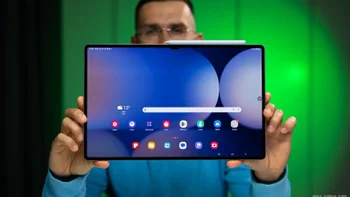Make smaller phones great again! (poll results)
We asked you last week about a trend that nobody took the users' opinion in, of huge 6-inchers that are in most of the cases uncomfortable to carry and operate. Lo and behold, we thought that some of our 2232 respondents may prefer smaller phones, but didn't fathom they would actually be the majority. Phone makers better take note, as, while the move to a taller and narrower aspect ratio and the thinning of bezels helped the footprint, the Android flagships in the last year or so are hovering around the 6"+ mark on average. Apple is soon to follow suit, and people would rather have more options with a smaller footprint than have only 6-inchers rammed down their throats by the powers that be.
| 2016 | 2017 | 2018 | |
|---|---|---|---|
| Samsung | 5.1" (S7) | 5.8" (S8) | 5.8" (S9) |
| LG | 5.3" (G5) | 5.7" (G6) | 6.1" (G7) |
| Huawei | 5.2" (P9) | 5.1" (P10) | 5.8" (P20) |
| Xiaomi | 5.2" (Mi 5) | 5.2" (Mi 6) | 6.2" (Mi 8) |
| Sony | 5.2" (Xperia XZ) | - | 5.7" (Xperia XZ2) |
| HTC | 5.2" (HTC 10) | 5.5" (U11) | 6" (U12+) |
| Motorola | 5.5" (Moto Z Play) | 5.5" (Moto Z2 Play) | 6" (Moto Z3 Play) |
| Vivo | 5.5" (V5) | 5.7" (V7) | 6.3" (V9) |
| 5.5" (Pixel XL) | 6" (Pixel 2 XL) | 6.2" (Pixel 3 XL est.) |
Quick calculation pegs the increase in the average screen size of the devices listed to go from 5.25" in 2016 to 5.46" in 2017. That's a 4% increase which is in line with the norms in previous years. From 2017 to this year, however, the models grew to the whopping 6.05 inches on average for the popular 2018 models above. That's 11% increase in screen sizes for the last year or so and has never happened before.
Granted, some of the humongous diagonals' footprint is offset by the move to a taller and narrower aspect ratio, but looking at the phones' dimensions, we can easily see that the growth between 2016 and 2018 is gigantic. There is barely a handset that fits well in the palm and can be comfortably operated with one hand anymore, and the trend is moving downmarket as well - the most popular Redmi line of Xiaomi that sells millions upon millions went from 5-inchers straight to 6-inchers, for instance, and, despite the bezel trimming or the narrower aspect ratio, the resulting models are still way larger than their predecessors.
Heck, Apple is going to do the same with this year's iPhones, rumored to start from 5.8 inches, while the largest iPhone ever is said to land at 6.4", and Samsung may have an answer to it with a 6.4" S10+ of its own. Where's that going to end? You probably understand why are we rooting for a rumored basic S10 with a smaller flat screen now, which would put the kibosh on the trend you can observe below.

Follow us on Google News










Things that are NOT allowed:
To help keep our community safe and free from spam, we apply temporary limits to newly created accounts: